Thierry Mugler’s Art of Fashion: Avant-Garde and Iconic
Thierry Mugler’s art redefined the boundaries of fashion, blending creativity, drama, and innovation. His bold silhouettes and futuristic...
Errika Gerakiti 30 December 2024
It is not a surprise that every carnival, regardless of its country of origin or other characteristics, is traditionally associated with Venetian carnival masks. Being a primary sign of a carnival, the mask has an interesting history connected with old traditions in Venice. Here you can discover the key information about the history of Venetian masks.
First of all, Venetian carnival masks can be analyzed through the prism of local traditions and customs. The Carnival of Venice is one of the most important and famous carnivals all over the world, taking place on a relatively small island. Historically, Venetians enjoyed comparatively high standards of living. The city was characterized by inequality among its citizens, which led to the development of traditions rooted in the need of hiding identity.

Initially, Venetians used masks to conceal their identity during different activities. Later, the masks were used during the Venetian Carnival in particular. Citizens decided to emphasize the special time by introducing periods when wearing a mask was not allowed. The mask ban was implemented during all the months except for the ones between Christmas and Shrove Tuesday.
In this way, in the frames of a small city, people created their unique tradition to use masks both during different activities and in daily life to hide personalities and enjoy some level of privacy. With time, the popularity of Venetian carnival masks grew. The masks were implemented into different national holidays and events all over the world.
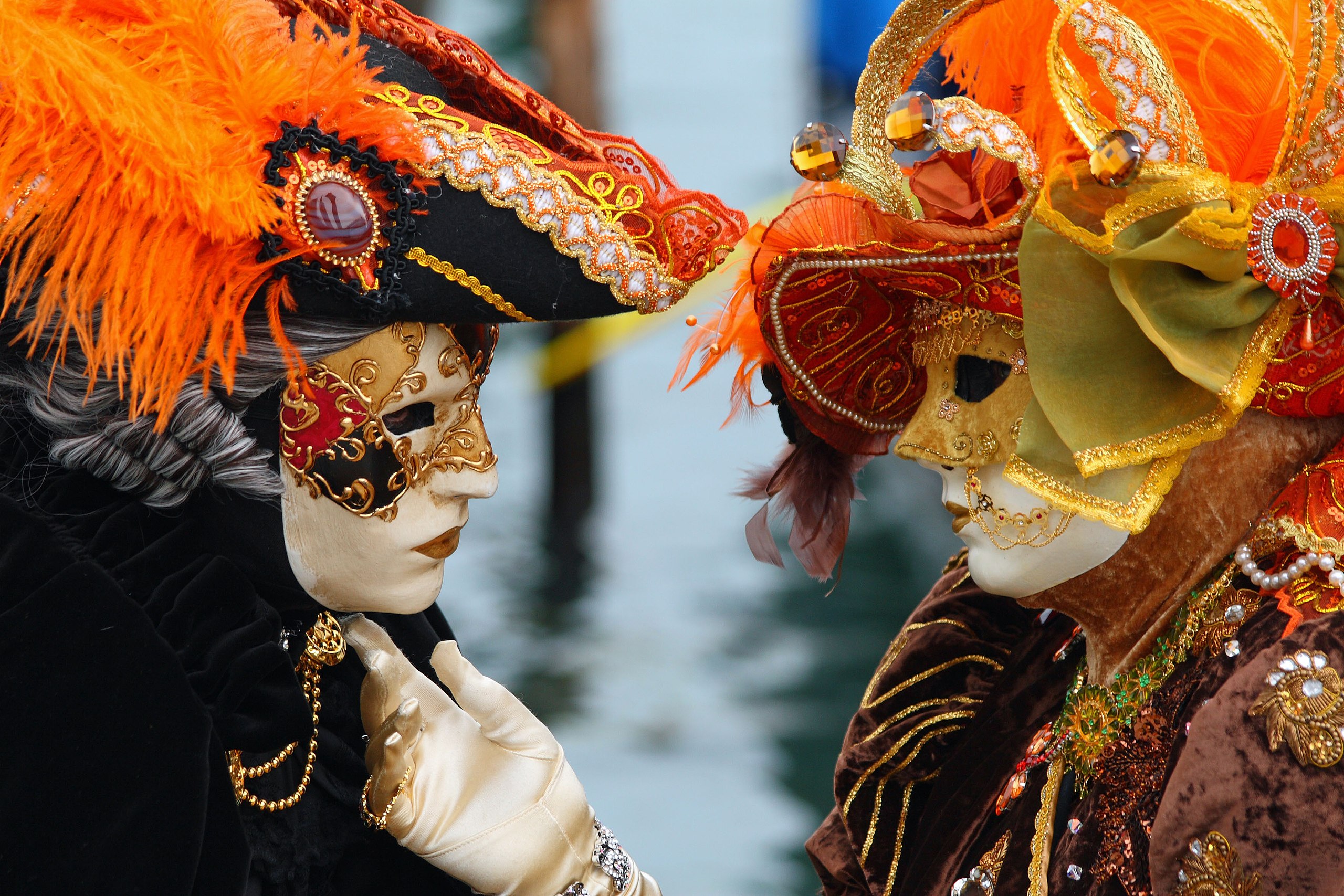
Besides, masks were perceived as a way to make every citizen equal regardless of his or her financial position, class, or status. Everyone was equal while wearing the mask. People could talk and discuss everything without the fear of being judged. As a result, Venice became the city where people were allowed to do more. This marked the city as free and decadent with the element of moral decline.
Concerning the material for making the masks, papier-mache was the basis, and fabric, furs, and feathers were used as additional decorations. In general, making Venetian masks required a skilled craftsman able to handle delicate materials.
Concerning different types of all Venetian masks, it is important to highlight two main groups: commedia dell’arte masks and carnival ones.
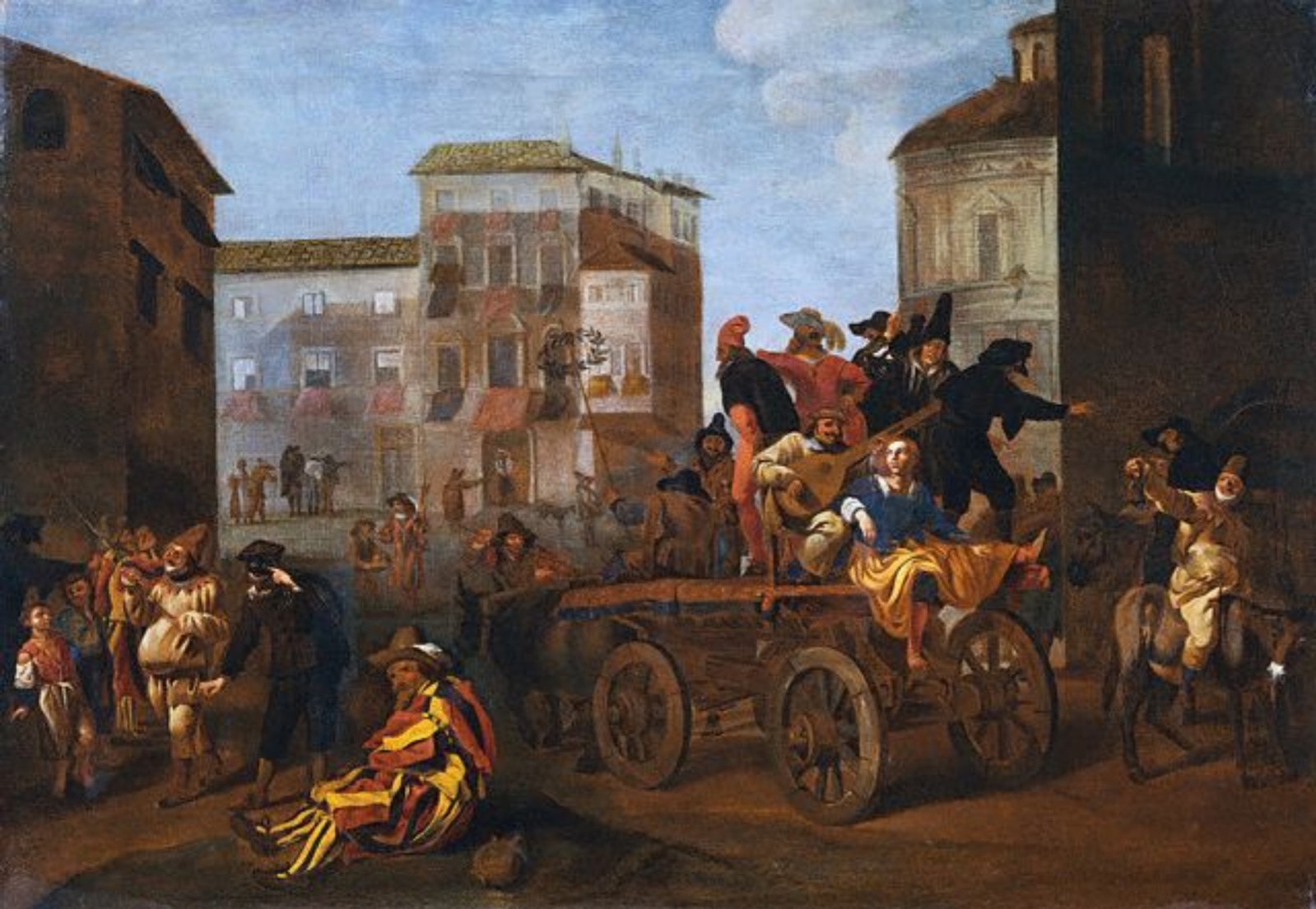
The first group is connected to a form of theater, including acrobatics, playing, and even juggling. The actors of the plays wore typical masks that represented the traditions and cultures of different regions. It is interesting to admit that while male actors mostly wore masks, female ones did not. Among the most famous characters was Arlecchino, a character from the Italian commedia dell’arte.
Traditionally, male actors who played Arlecchino wore black masks with a red spot on the forehead.
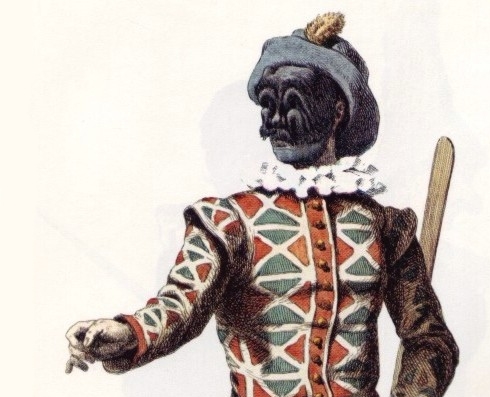
Besides, Brighella can be highlighted as a masked character and a friend of Arlecchino. He wore a green half-mask that pointed to his villain nature, referring to greed and lust for money. There were a lot of characters who had their style of masks connected with their role in the play and their characteristics.
The second group of Venetian masks was used by the citizens during the period of Carnival regardless of their social class and status. Bauta can be marked as a trendy mask in the Carnival due to its ability to hide identity and class. It is important to note that the mask allowed its wearer to express freely his or her ideas, thoughts, and even emotions. To add more, this type of mask was also used by people in power to visit the Carnival without drawing the attention of other people.
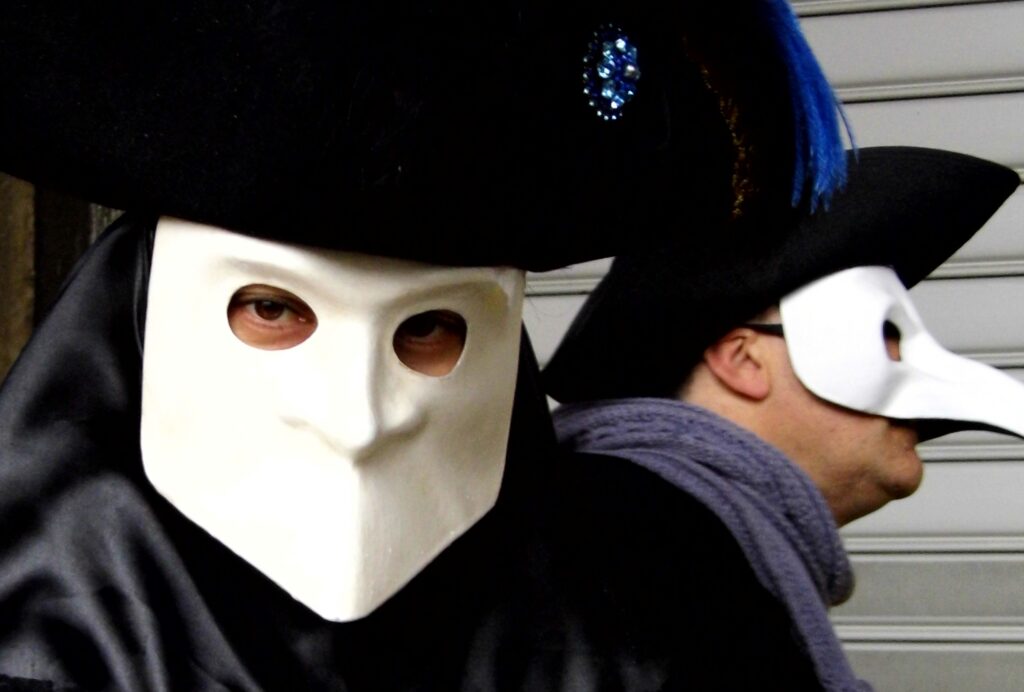
The origins of the name bauta are still ambiguous. It may come from the German word meaning “to protect” or the Italian babau which relates to a scary creature. Alongside bauta, Venice Carnival is famous for the masks named dama which name refers to the women who wore expensive clothes and jewelry. It is true to say that nowadays, this type of mask is the most widely worn all over the world due to its chic and elegance.
Gatto is an interesting type of Venice mask referring to the image of the cat represented through the outlook of the mask. Since cats were rare creatures in Venice, they became represented through the masks.
And finally, there was a mask representing a particular kind of clown in Venice: a Jester. Being rooted in ancient theaters, the Jester was either a male or female character associated with European Middle Ages. The Jester can be defined as a fool gifted with childlike madness. In this way, the Jester mask was most commonly used by people with disabilities to earn money.
To sum up, Venetian masks have a long history rooted in the culture of Venice. Now, they’re quite popular all over the world.
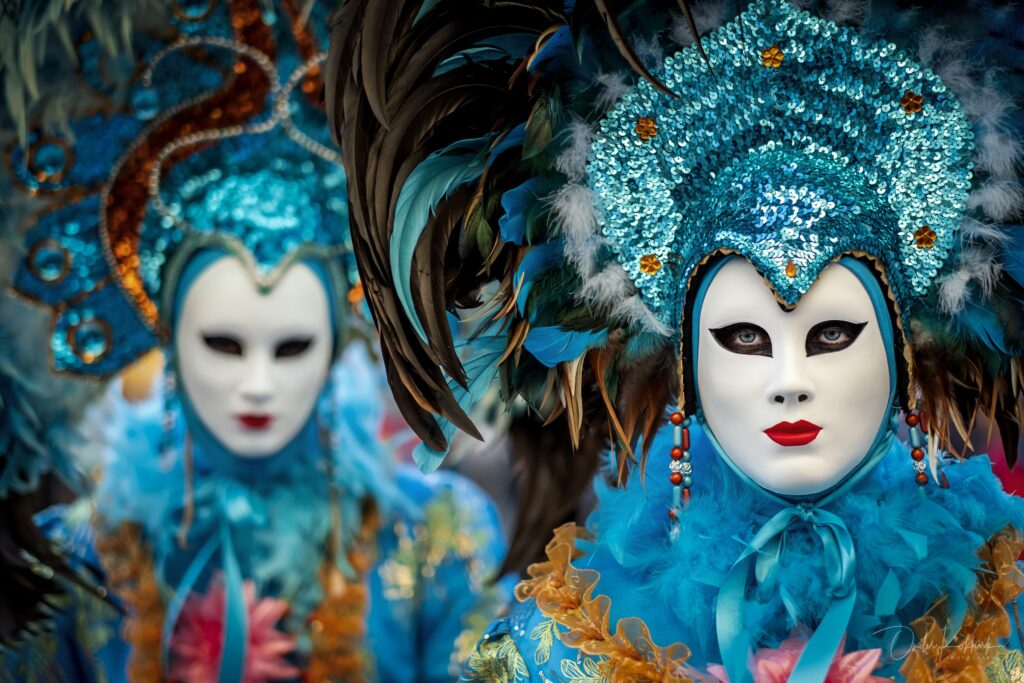
Masks were used for both carnivals and for everyday life. It was necessary for the citizens in a city of financial and social inequality. Wearing a mask allowed for more freedom and privacy, allowing for relaxed behavior. Besides, there were different types of Venetian masks; starting from the most luxurious masks made with extravagant materials to the less expensive ones, meant for clowns. Being connected with the theater and different roles, masks were used as an essential element of the play.
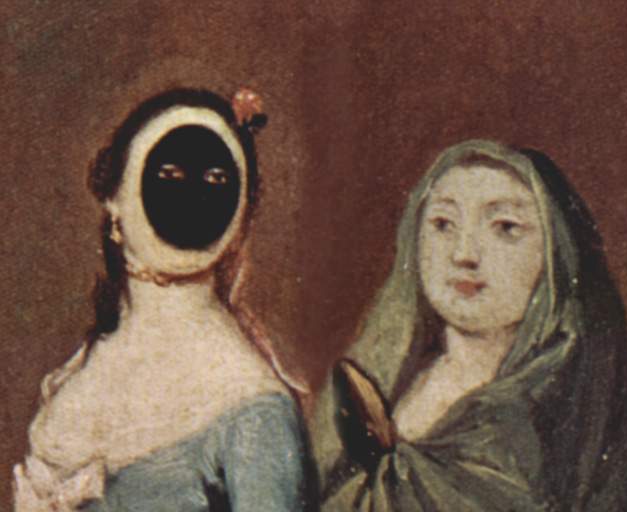
In the case of the Venice Carnival, masks were displaying this special craftsmanship. Nowadays Venice masks can be seen all over the world during different balls, gatherings, and other activities. They constitute a unique part of Venetian culture, now known by millions of people.
Author’s bio
Thornie Longmuir is an SEO specialist and content creator. Since 2007, he has been working in the field of information technology and internet communications for the website. Now, he practices search engine optimization (SEO) for sites, as well as for leading advertising companies such as Google AdWords and Facebook. He tries to present the articles in simple and understandable language. He reveals relevant topics and fundamental principles for creating, advertising, and promoting websites on the Internet. The main part of the published material is designed for beginners who want to learn how to develop and promote web projects on their own.
DailyArt Magazine needs your support. Every contribution, however big or small, is very valuable for our future. Thanks to it, we will be able to sustain and grow the Magazine. Thank you for your help!